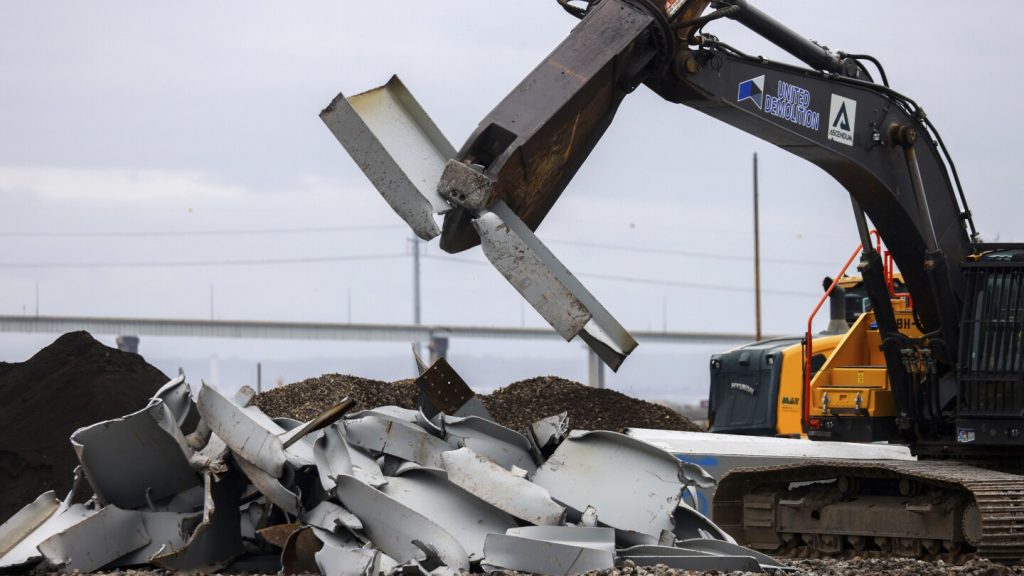After nearly three weeks since the collapse of Baltimore’s Francis Scott Key Bridge, crews are using the largest crane on the Eastern Seaboard to haul the wreckage to a nearby salvage yard. The heaviest section weighed about 450 tons, and workers are disassembling the metal trusses using propane torches and giant shears. The Chesapeake 1000, a floating crane with a storied history, is assisting in the salvage operation. The Key Bridge took five years to construct in the 1970s and now the focus is on dismantling the remnants of the fallen landmark.
The collapse of the Key Bridge on March 26 resulted in the tragic deaths of six construction workers, with four bodies recovered so far. Salvage crews are working to recover the remaining two bodies and hope to open a temporary channel this month to allow more commercial traffic through the Port of Baltimore. Over 1,000 tons of steel have already been removed from the waterway, but the process is tedious, dangerous, and complex. Leaders of the operation emphasized the challenges during a visit to the salvage yard at Tradepoint Atlantic.
Tradepoint Atlantic, a maritime shipping terminal in the Port of Baltimore, has increased operations to accommodate ships that were scheduled to dock at other terminals. Before removing bridge pieces, divers are surveying the underwater wreckage and devising a safe extraction plan. Robyn Bianchi, an assistant salvage master, highlighted the presence of debris, rebar, and concrete underwater, making the process methodical and slow. Meanwhile, crews are also working to remove containers from the cargo ship Dali before lifting steel spans off its bow and refloating the vessel.
The salvage operation faces numerous challenges, including the need to carefully navigate the murky underwater wreckage and ensure the safety of workers. Salvage crews are coordinating efforts to clear the waterway and restore normal commercial traffic through the Port of Baltimore. The dismantling of the Key Bridge has become a race against time as workers strive to clear the debris and reopen the port’s main channel by the end of May. The salvage operation involves intricate planning and execution to ensure the safety of workers and the successful removal of the collapsed bridge wreckage.
As the salvage continues, the focus remains on recovering the remaining bodies, clearing debris, and reopening the port for commercial traffic. The Port of Baltimore plays a crucial role in the region’s economy, and efforts are underway to minimize the impact of the bridge collapse on maritime operations. The complex nature of the salvage operation requires a coordinated approach and meticulous attention to detail. Despite the challenges, salvage crews are working tirelessly to restore normalcy to the port and mitigate the effects of the Key Bridge collapse on local shipping activities.


